The British Columbia Field Ornithologists (BCFO) have a number of good bird photographers among their members. On November 12th, the organization began featuring those members and a selection of their bird pictures taken within the province. The first bird photographer chosen was Laure Neish. I am delighted on a couple of counts.
First, I am pleased to see a naturalist’s organization treat nature photography in a more thoughtful manner than the frequent approach of considering it to be a competitive activity appropriate for a (rights-grabbing) contest. Featuring the works of a keen bird photographer is a superb way to familiarize others with this fascinating face of the natural world.
Second, I am delighted with the initial choice of Laure Neish. It was her images that I first studied when I began to take pictures of birds, myself.
I am not a member of the BCFO, yet I was fascinated by the challenge faced by its featured members: out of a myriad images of birds, choose only a handful of favourites to display.
If I were to face such a challenge, which of my bird pictures would I pick?
I pondered; I posted. Here is a favourite dozen of the bird pictures I have taken in the last few years—not from across BC, but merely from around Kootenay Lake. They are presented only approximately in the order of my increasing enthusiasm.
There are loons on Kootenay Lake for most of the year, but they are infrequent: I usually only see them well offshore in the early dawn light. Now and then I manage a satisfactory closer image; this is one.

Owls are far from an everyday local observation. I have seen only three species around here (other birders have had more luck). This Northern Pygmy Owl seems to have its head on backwards. Actually, owls have great dexterity and can turn their heads to look behind themselves.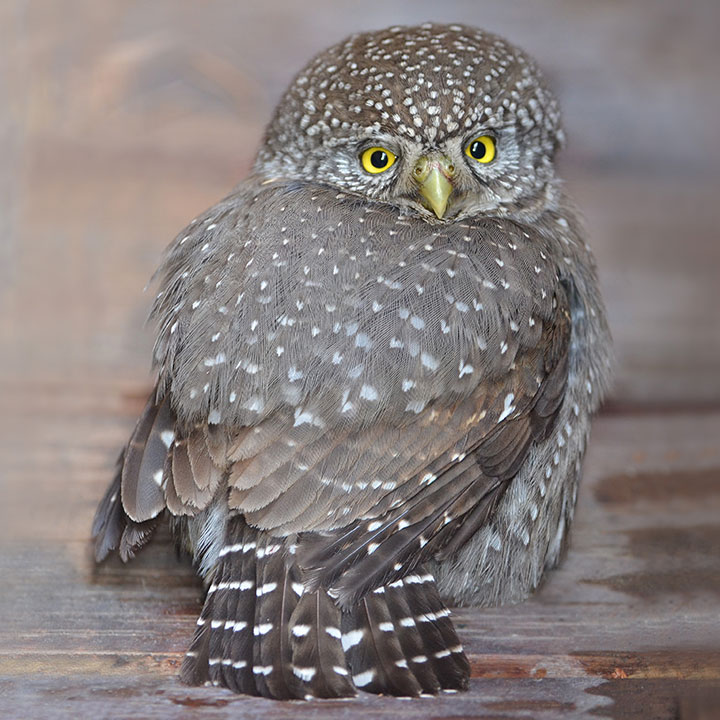
I had seen pictures of the courting rituals of the hooded merganser, but I hadn’t expected to see the event. This is a male hoodie expressing his love for a nearby damsel: he erects his crest, tips his head back, and calls to her. 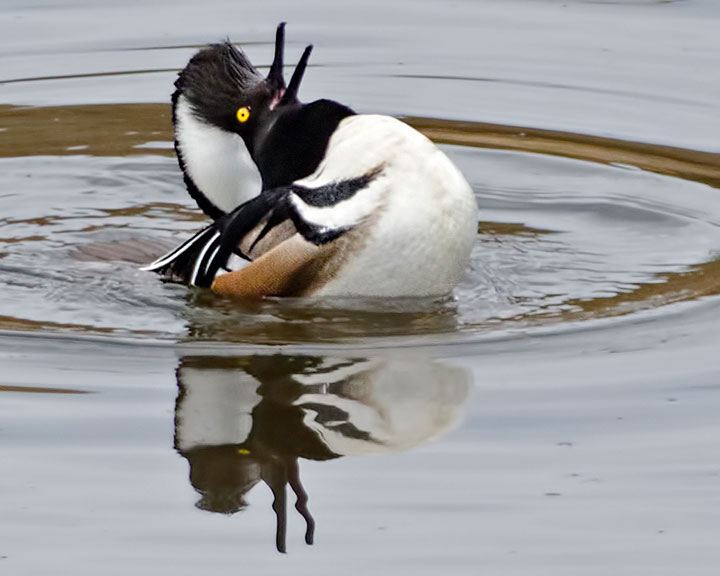
The Merlin is a falcon. It perches high in a tree and watches for smaller birds to capture and consume. This one with the impressive cloak of feathers is a male.

The Pine Grosbeak is one of the irruptive finches—it is not seen every year but now and then it flows out of the north in considerable numbers and feasts on local berries. I rather like the red on red of the bird and the berries.
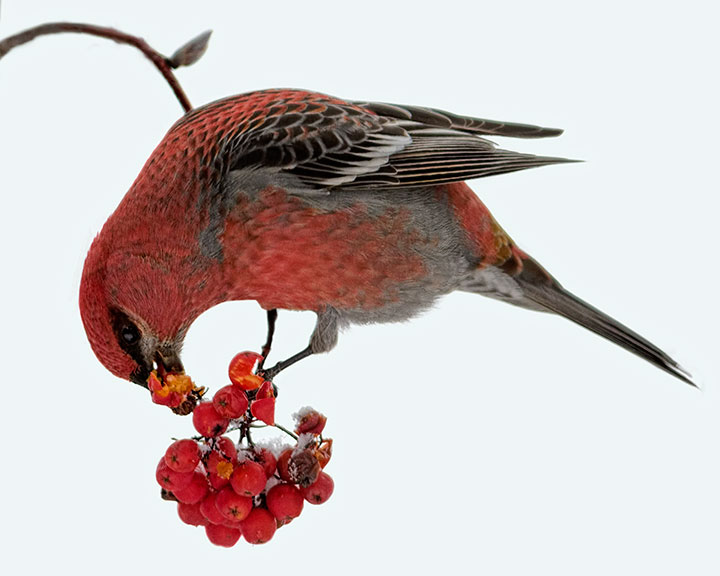
I am partial to this Ruffed Grouse, not only because of its impressively variegated plumage, but because I consider it a friend—it hangs around my yard.
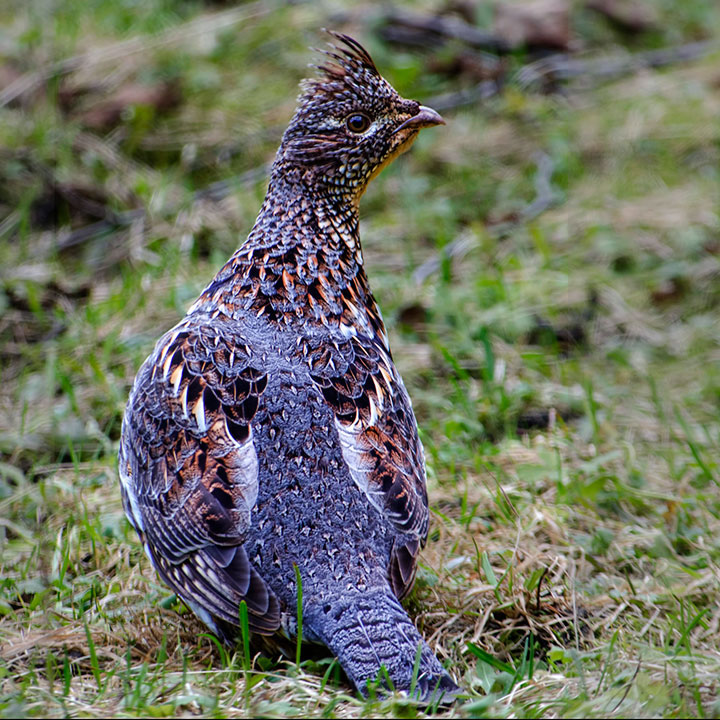
The Wood Duck displays spectacularly iridescent colours—particularly when it raises its wings.

Although not seen as often as an eagle or an osprey, the Red-tailed Hawk is a local staple. This one was seen flying alongside a highway. Who could resist snapping its picture?
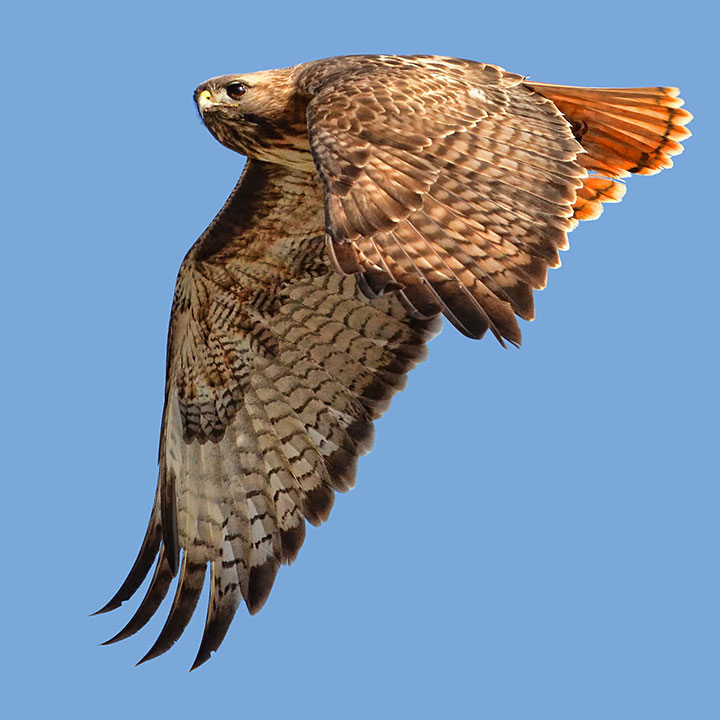
Great Blue Herons are most often seen hunting in the dawn hours, but may be seen at any time. I take many pictures of herons; this view of one flying along the lakeshore was particularly satisfying.
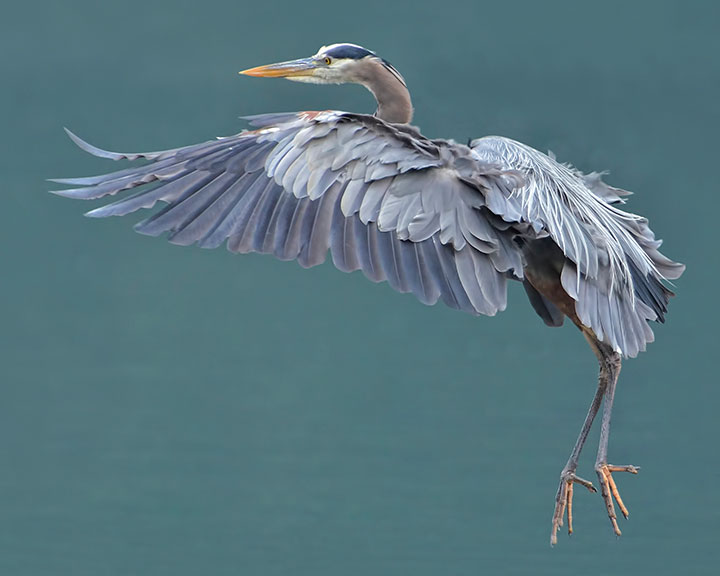
The American Kestrel is, like the Merlin, a falcon but it is even smaller. This male has arrived to feed a headless bird to chicks in a tree cavity.
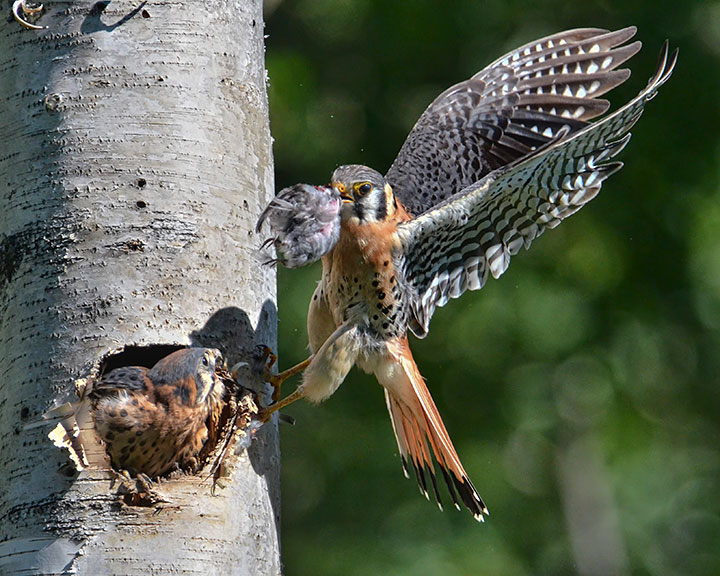
The osprey is, perhaps, my favourite local bird—I have known it since childhood. This one has brought a sucker to a piling and is about to enjoy breakfast.
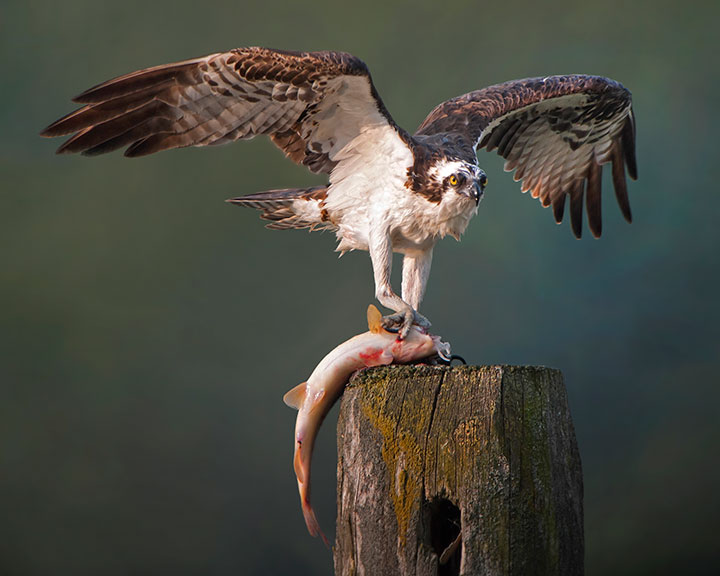
I usually only see the Bald Eagle from a distance, but this insouciant bird seemed as interested in watching me as I was in watching it. Of the many pictures I took, my favourite was the view taken just as it was first touched by the light of the rising Sun. This is perhaps the second best bird picture I have taken.
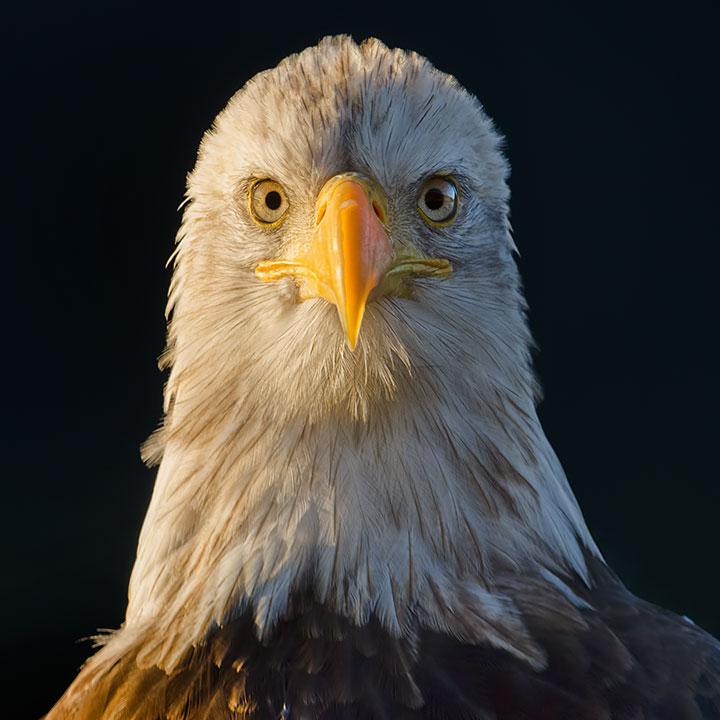
The eagle portrait raises the question of what I think is my best ever bird picture. Here it is: two Trumpeter Swans at Kokanee Creek Provincial Park. They are seen in the morning: white birds against the stygian mountainside.
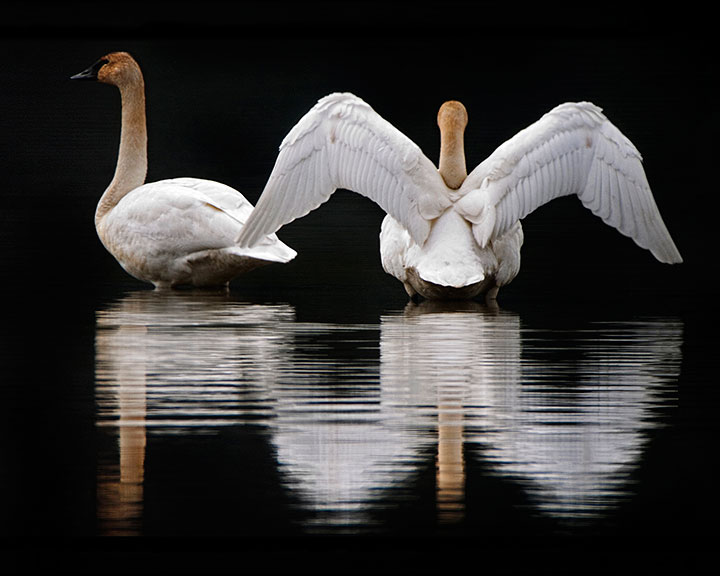
I had intended to post a dozen of my bird pictures—I ended up with a baker’s dozen. The grouse claimed amicus status and insisted upon being included.

What a capture. Beautiful
Thank you, very impressive. How close to the Bald Eagle have you been?
Michael, on the occasion of that shot, I was about ten metres from the eagle. Further, as I was at the eagle’s eye level, there wasn’t even any keystone distortion. I am unlikely to ever be able to repeat the experience, but then that is the case with all the best pictures—they are one-off events.
Wonderful pictures! I’m always amazed how close-up your pictures are and the fine detail that shows up. Getting good pictures of birds is quite an art – they never sit still long!
Leone, frenetic birds present a problem to me. In my collection, above, you will notice that it is skewed strongly towards birds that normally need not worry about being eaten. The defencive manoeuvres of smaller birds can serve as a talisman to foil both predators and photographers.
Alistair, if you ever offer photography classes (I hope you do), I will be the first one to sign up! How on Earth do you do this???? I know that you have a good equipment, but…!!!! ?!?!
Thanks for pushing the limits.
Jana, when you set out to teach something, you initially mimic those who taught the material to you. As no one taught me, I don’t know how to teach others. Indeed, I don’t even know what it is that I know.
And I like you sense of humor too ….
Learning a lot anyway!!!
Once again all I can say is “Amazing”
Alistair: it strains my capacity for superlatives; everts the material of said thought, and I’m backworded up to the Bard’s time. The bird’s words take flight.